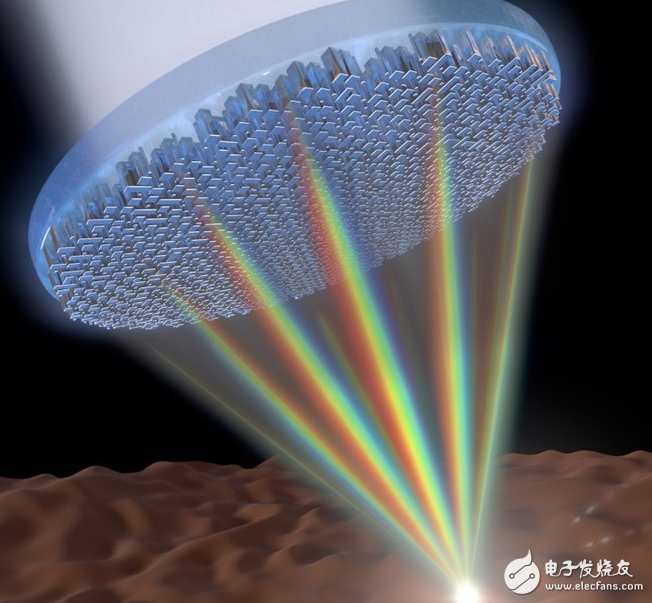Super-lens that can handle visible light range makes AR/VR display headgear lighter
The current AR/VR display headgear on the market is very cumbersome and bulky. It is reported that a research team solved this problem through a super lens. For the first time, it was found that using a super lens can handle the entire visible range. This technology will make the AR/VR display headgear lighter.
According to foreign media reports, although the modern AR and VR display headbands have been reduced in size and weight, the optical relationship has made this work difficult. The lenses used in the headgear need to focus the entire visible spectrum and white light, but this is a tricky one because the wavelength of each light is different.
It is known that the wavelength of blue light passes through the lens slower than the wavelength of red light, so they cannot reach the eye at the same time, and the consequence is chromatic aberration. The current solution to this problem is to use multi-piece lenses of different thicknesses, materials, surfaces and processing methods, which means that the display headgear needs to be made large.
Recently, researchers from Harvard University's John A. Paulson School of Engineering and Applied Science believe they have found a solution to this problem, using metalenses. A superlens is a plane that uses nanostructures to concentrate to avoid chromatic aberrations. Although the super lens is not a new technology, it was first discovered to be able to handle the entire visible range.

Research team members say that the superlens is very thin, very easy to manufacture and low cost, and this breakthrough covers the entire visible range.
The key to making such a superlens is surface treatment. Titanium dioxide thin film arrays are used to focus light wavelengths by adjusting the height, shape, width, distance, and re-pairing of these films to achieve refractive index control. In this way, the wavelengths of all the light can be reached at the same time at the same time.
The next big challenge for the team is how to match the full wavelengths that the human eye can see and how to increase the size of the hyperlens. The researchers pointed out that for the latter, the lens diameter needs to reach about 10mm. At the moment, Harvard has licensed the IP of this project to a startup, so it can be seen that the commercialization of this technology is very feasible in the future.
What`s the main features appear into your mind when you look yoga laptop? Lightweight, super thinner, touch screen, 360 rotating, smaller size, like as notebook? You are right, that`s the main reasons why some people also called it as laptop yoga slim or yoga notebook. To OS, just same as Education Laptop-windows operating system, so you can see many windows yoga laptop at the market around the world. In fact, this intel yoga laptop usually is designed for normal jobs, like basic WPS, Photoshop, video or music editing, online learning, shopping, presentation when on a business trip, etc. At our store, you can see 11.6 inch n5100 360 Laptop in metal, 13.3 inch 360 flip laptop, and 14 inch 360 degree rotating laptop, etc. The people who take business trips often or prefer fashion design should like this type device.
There are education laptop also, like 14.1 inch Student Laptop for Hope or government Projects, 15.6 inch competitive celeron business laptop for normal business works, 15 inch 10th or 11th Gaming Laptop for heavier tasks, like teachers, high or university students, etc, 16.1 inch i7 16gb ram 4gb graphics laptop for engineering student, etc
Any other question or other requirements, just contact us freely.
Yoga Laptop,Laptop Yoga Slim,Yoga Notebook,Intel Yoga Laptop,Windows Yoga Laptop
Henan Shuyi Electronics Co., Ltd. , https://www.shuyielectronics.com